Monthly Main Meeting Highlights
The April 2019 Main Meeting
![]() This month Huawei come along, having just launched the flagship P30 and
the Matebook X Pro and the 13 laptops. We were one of the first groups to see the new Mate X which had just been launched that day.
This month Huawei come along, having just launched the flagship P30 and
the Matebook X Pro and the 13 laptops. We were one of the first groups to see the new Mate X which had just been launched that day.
Tonight, Jun Liang
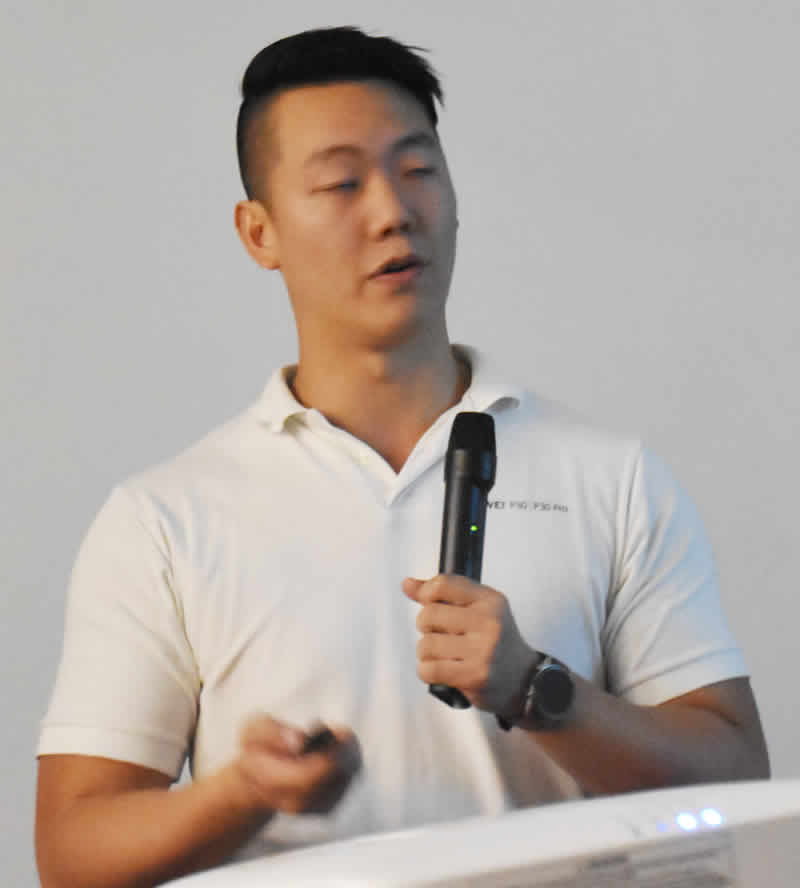
and Dom Chen
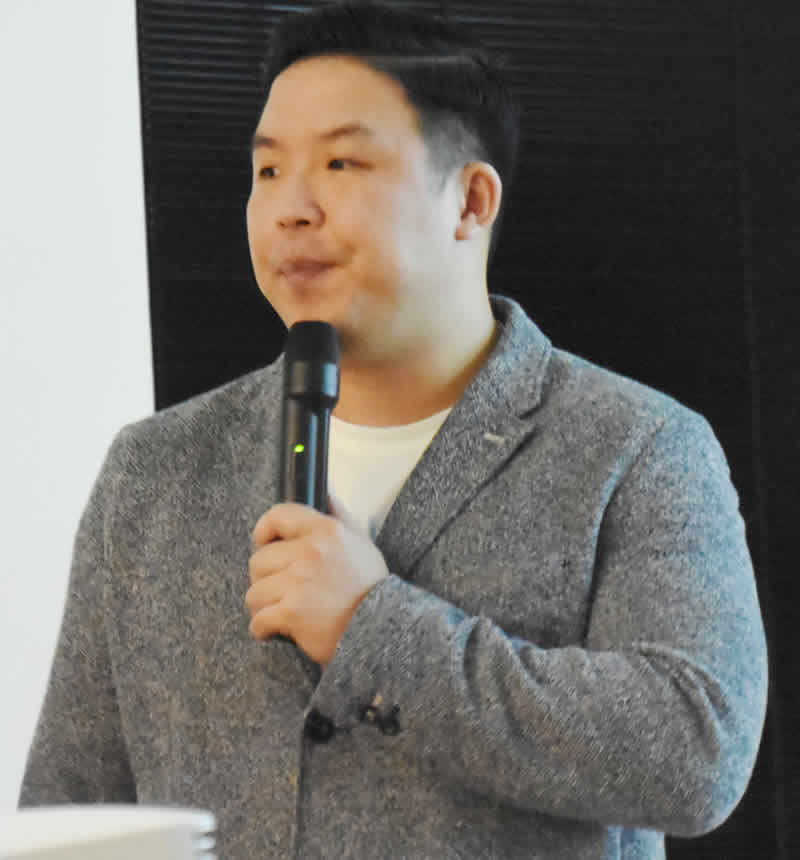
from the Huawei Consumer Business Group gave us the complete picture on these Huawei flagship products. Dom started with a video of people in Bondi trying the pronounce the name. Phonetically it’s Warway. Dom remarked “Think of “which way” “Warway”.
He then led us through a brief history of Huawei. It was formed in the then sleepy fishing town of Shenzhen thirty years ago.
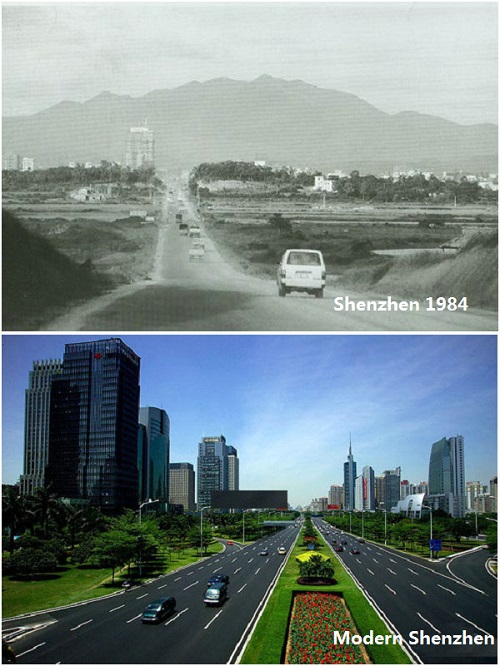
Where it made switches for telephone exchanges.
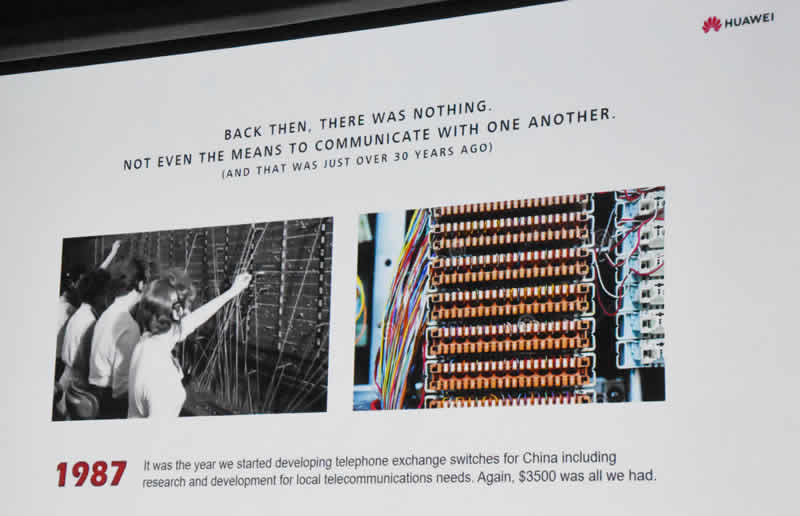
Now Shenzhen is considered China’s Silicon Valley.
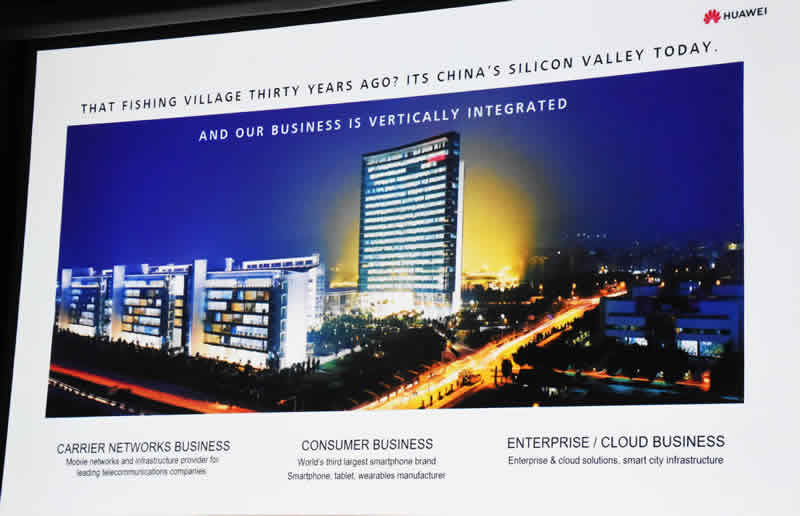
There are three parts to the business, the carrier network, the enterprise or cloud business, and the consumer arm of which Dom and Jun are part. That’s the arm which makes the phones, the smartwatches and the laptops. Dom mentioned that right now Huawei is currently the world’s largest ICT company connecting roughly “a third of the worlds communications networks”.
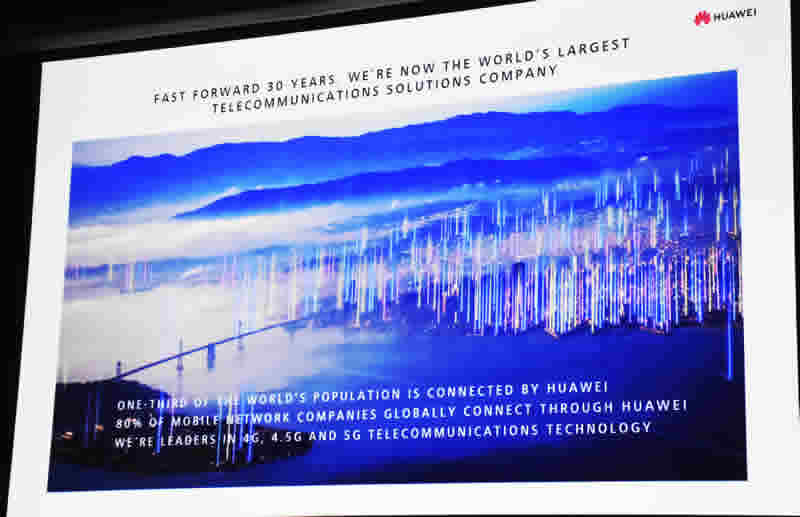
They achieved this through spending around 10% of profit back into R & D. If you have ever used sleep mode, that little aeroplane icon on your phone when travelling then you are using a Huawei patented product.
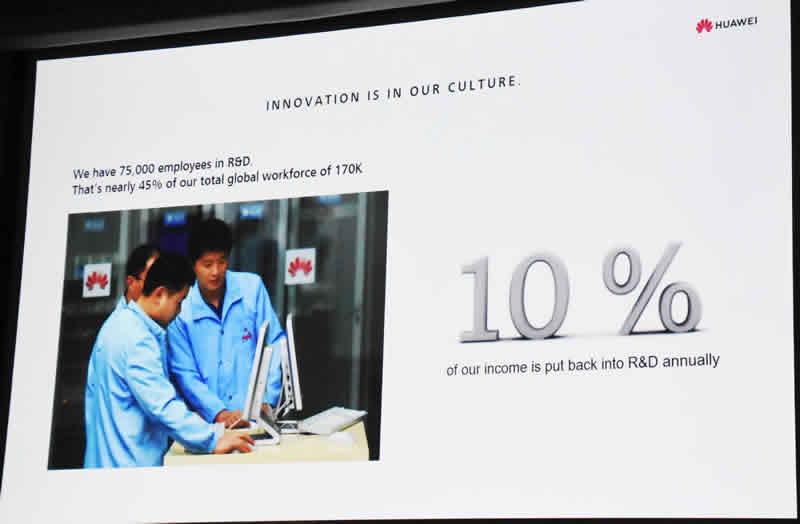
There are around 75000 people in their R&D which is around 45% of the total employees.
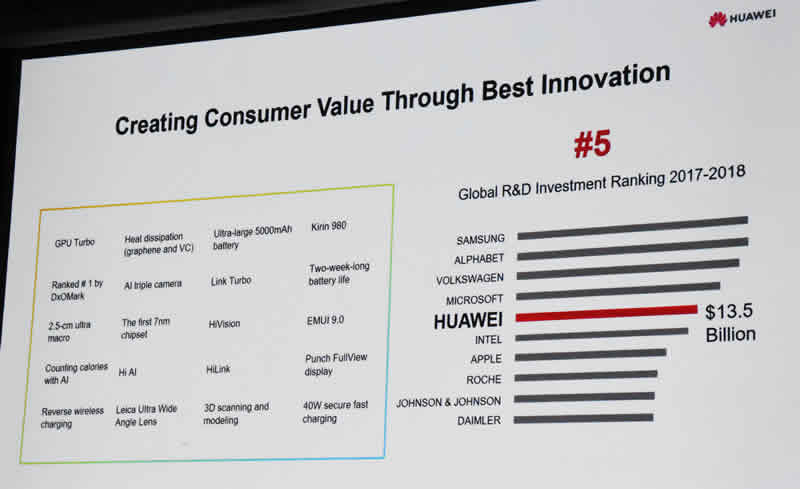
That makes it the 5th largest investor in R&D. Just some of the things Dom said we have or can look forward to is longer battery life, especially for smart watches, reverse wireless charging, along with development of their own AI and chipsets. Speaking of batteries, Huawei is looking at graphene for new batteries.
There are thirty-seven R&D innovation sites world-wide. They include Paris, London, Japan, India and the US. Each one has a certain focus - Paris is aesthetics, the US is looking at the using the electromagnetic spectrum and chipset, while India is software, and Japan Multimedia and materials development.
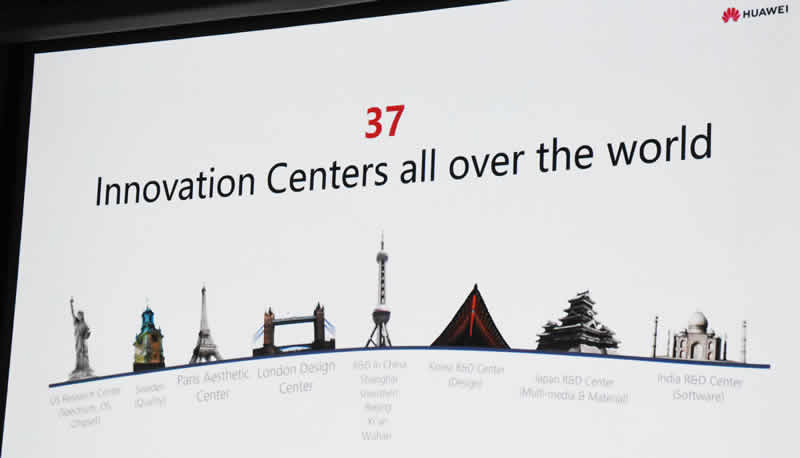
From Paris we see new colours like the new breathing crystal used on the P30, and in Germany a partnership with Lecia to bring innovative lens development into the phone camera.
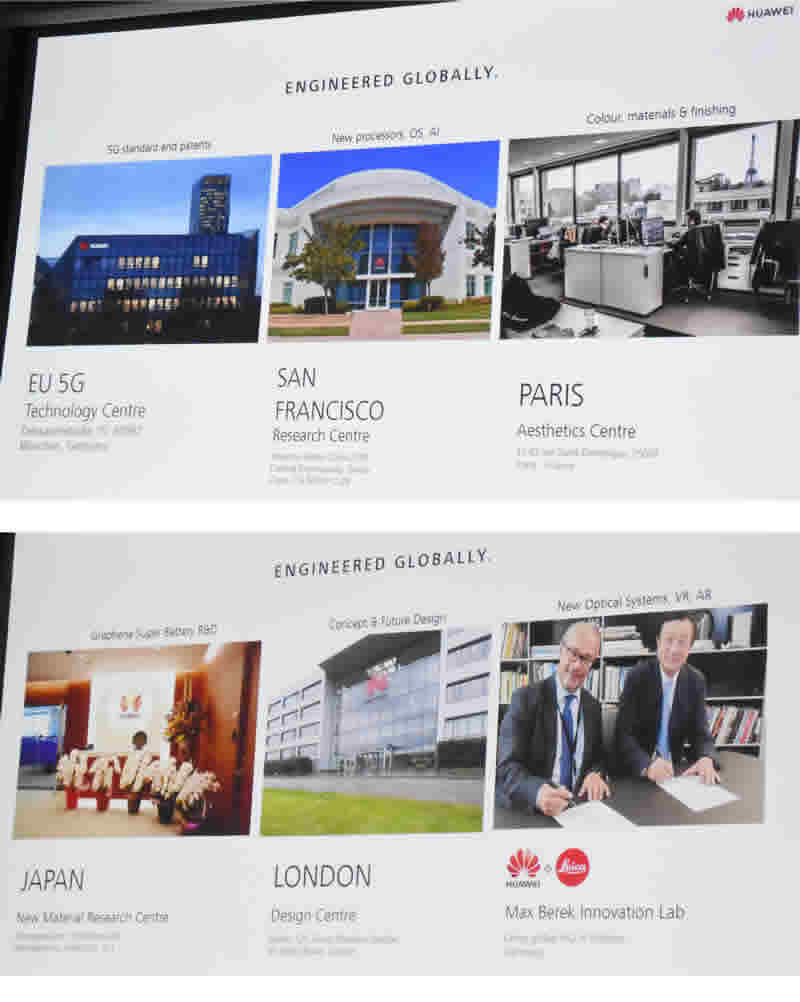
The company even has an innovation centre here in Chatswood looking at customer experience or user interface (UI). Along with the global innovations Huawei have entered into partnerships with companies like Microsoft in developing the Huawei laptops, Google with its Android system for their smart phones and Porsche Design for some of the more eye-catching design features.
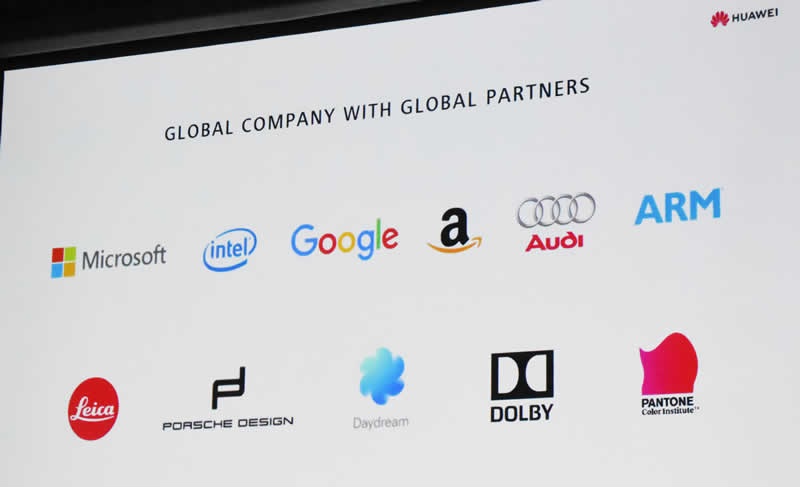
Dom then looked at the innovations Huawei have introduced to their phones. Nothing is released without vigorous testing and control.
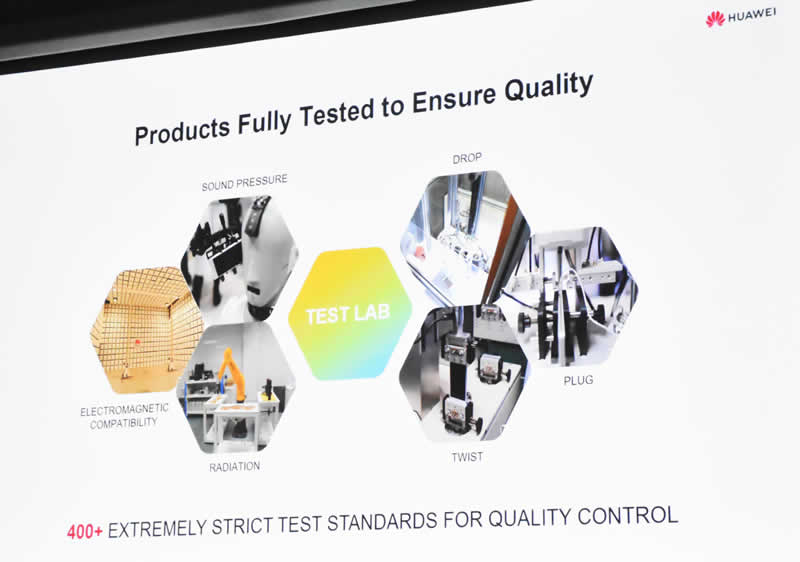
Along with the GPP and GDPR global regulations giving strict privacy protections.

The growth has been such that in 2018 Huawei was able to claim the number two spot as a global manufactory of mobile products.
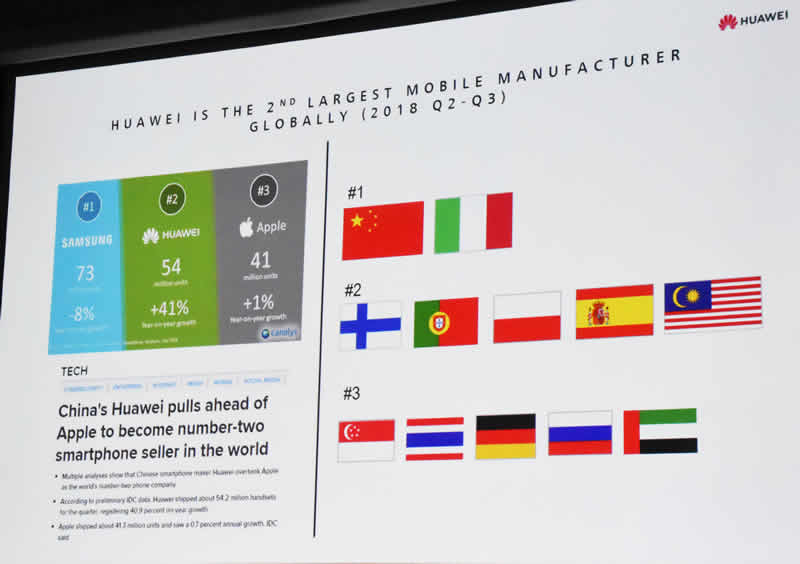
And number three in the world market behind Samsung at 20.8%. While Apple only just exceeded them by point two percent (0.2%).
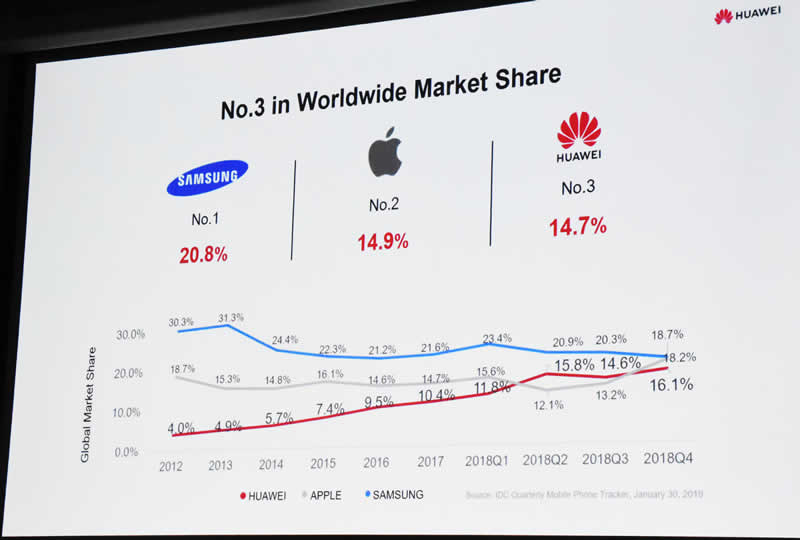
Dom also mentioned that Huawei had rebuilt the NSW Ambulance system and brought stable Wi-Fi to the Sun Stadium on the Gold Coast.
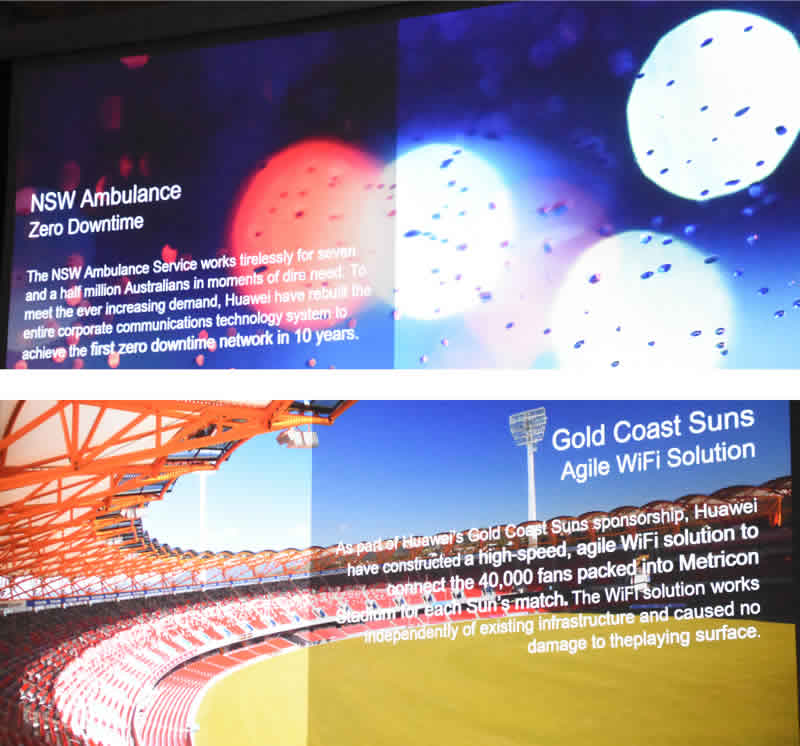
We then moved on to the product range starting with wearable tech like the Huawei Watch GT which was on offer as a raffle prize. It has a timeless design, that is it looks like a great wrist watch. Linked to your android phone with the Huawei app, you can see all your notifications and alerts, you can even tell the time. For Huawei the real innovations was in the battery life. Most watches have around two the three days while the Huawei has up to two weeks.
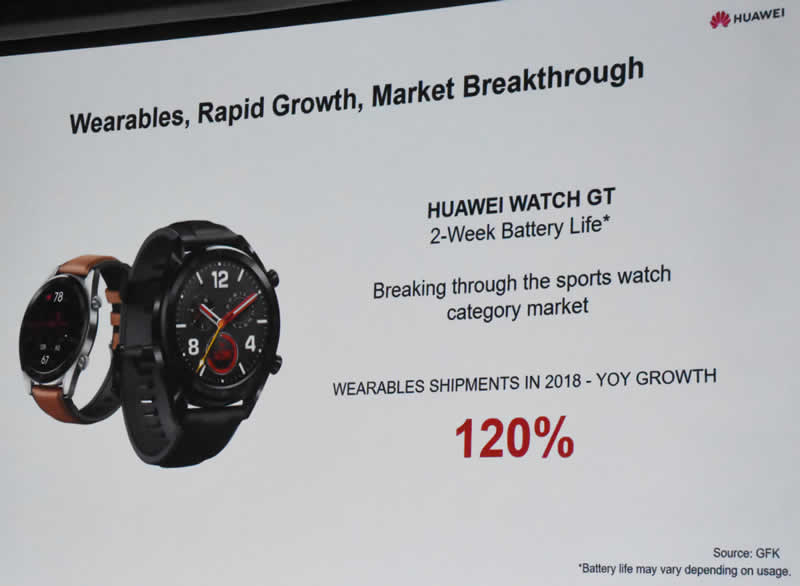
We then considered the Matebook X Pro and Matebook 13 series of notebooks.
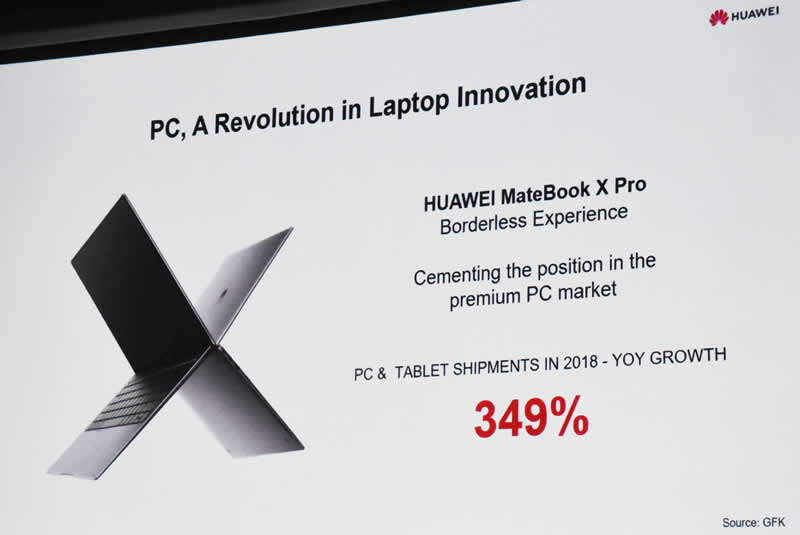
The Matebook Pro X has little or no bezel or border around the edge. The webcam is taken out of the screen to deliver a full screen for your work area. The webcam is now a mechanical pop-up device on the keyboard area.
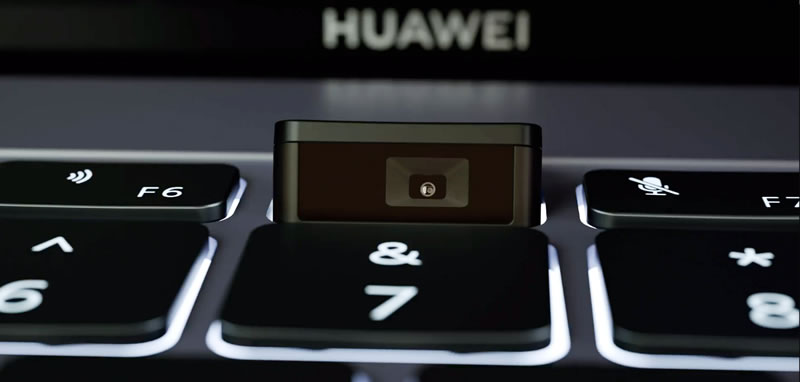
We moved on to the Mate X foldable phone.
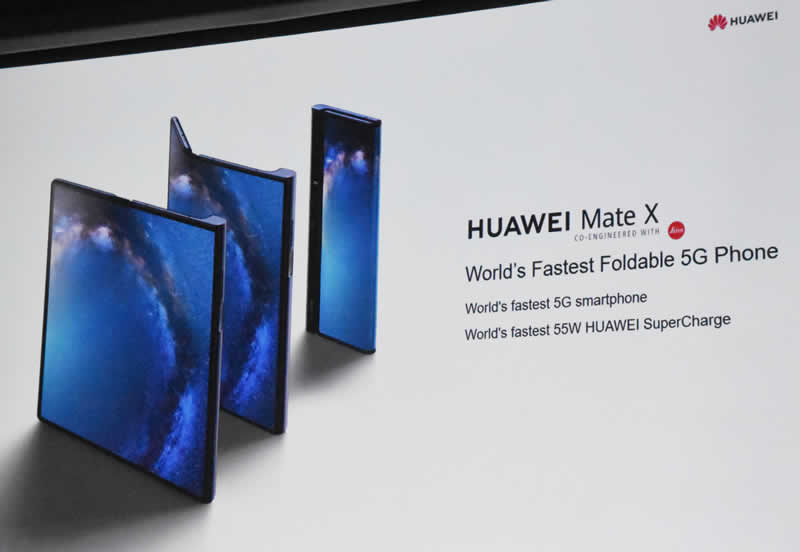
Dom pointed out that the Huawei approach was to have the screen on the outside which gave much more space.
Unfolded the Mate X has eight inches over the Samsung foldable offering which has 7.2 inches.
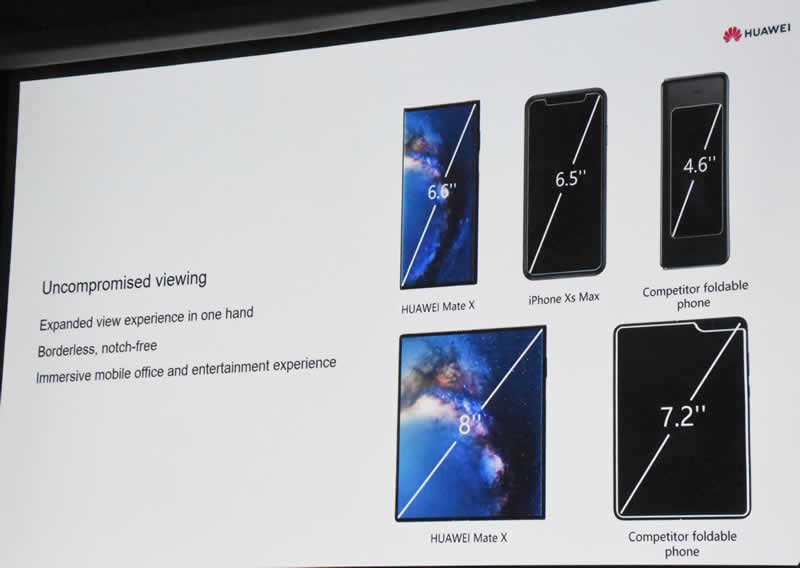
The Falcon hinge is the one feature that makes the Mate X so thin.
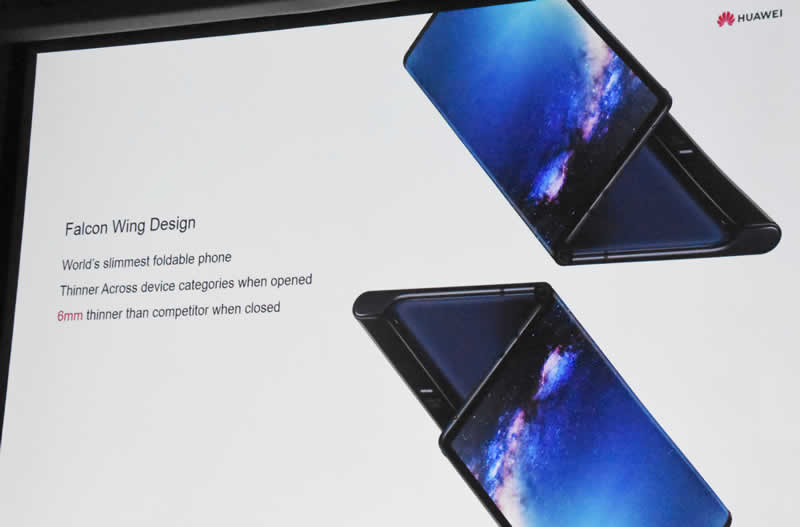
We then looked at the whole product range. The Y series phones are entry level.
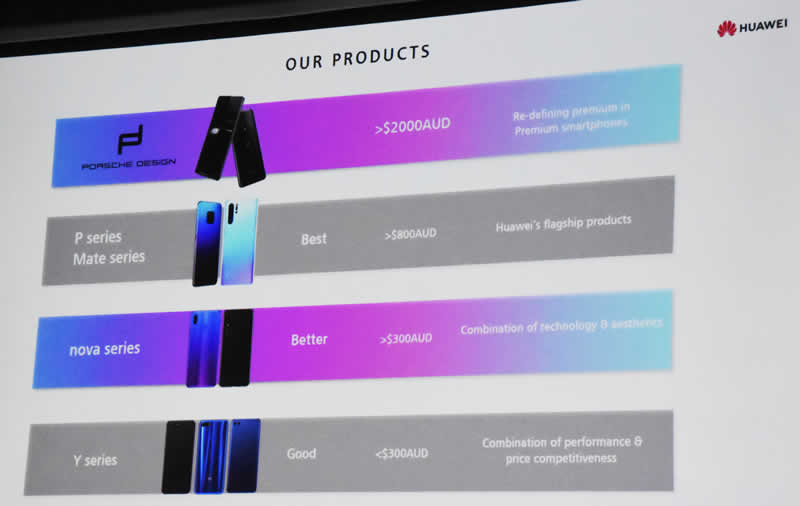
The mid-range Nova, the P series which is top of the range and the Porsche Design premium smartphones.
Then it was time to look at Huawei flag ship phone the P30.
The P30 is a photographer’s dream. Using their collaboration with Leica they introduced the dual lens system in the P9 series in 2016.
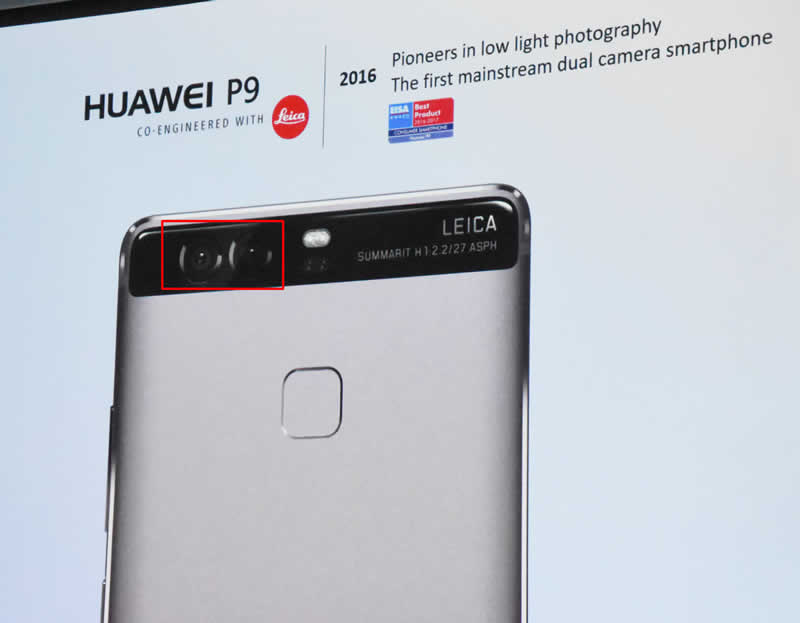
Then in 2017 they introduced the 20MP camera with the ability to recognize the number of people in a photo and adjust the focus. Pursuing their artificial intelligence strategy, this was followed last year with the triple lens and AI driven P20.
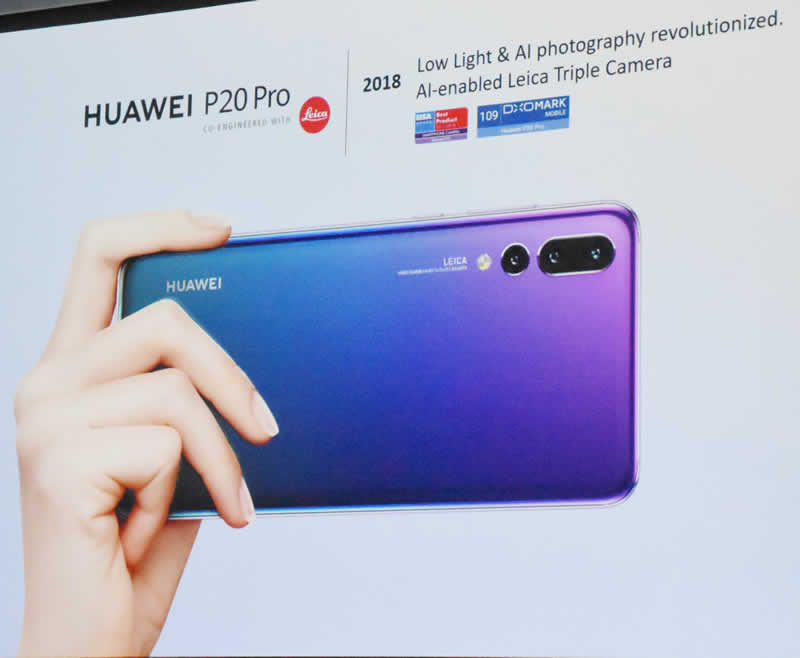
This phone was awarded a DXO mark of 109 the highest number awarded at the time.
This year they introduced the P30.
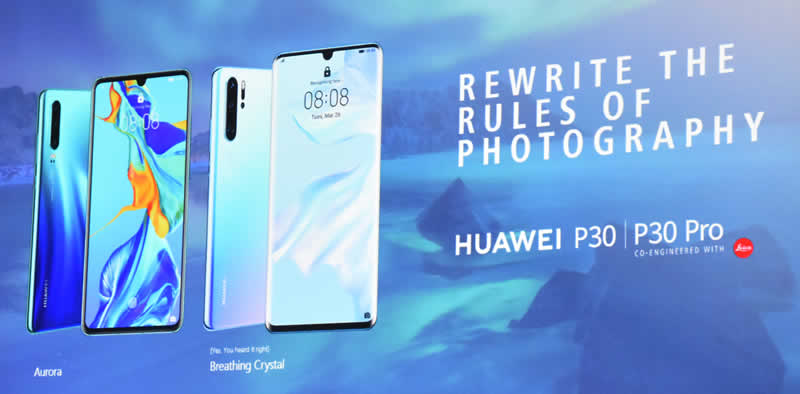
Now most people still think of these things as phones after all you generally buy them from mobile phone network providers but phone calls and text are a small part of what these machines are designed for. The P30 is all about the photo and it is reaching a point where the smartphone will eclipse the camera as the major source of everyday photos.
Technically the P30 has a 6.47-inch OLED screen. The front camera space is reduced to a small “dew drop” while the earpiece on the Pro version is a magnetic levitation which means the whole screen is the speaker oscillating to create the sound waves you hear.
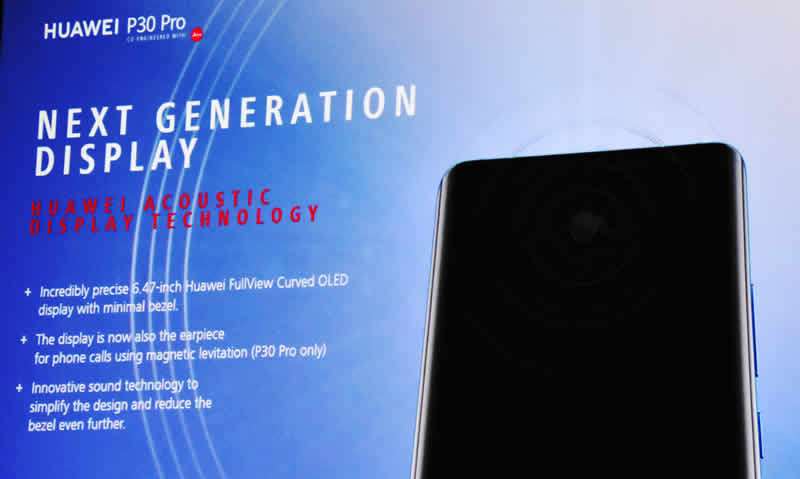
The fingerprint security is embedded in the body and face recognition.
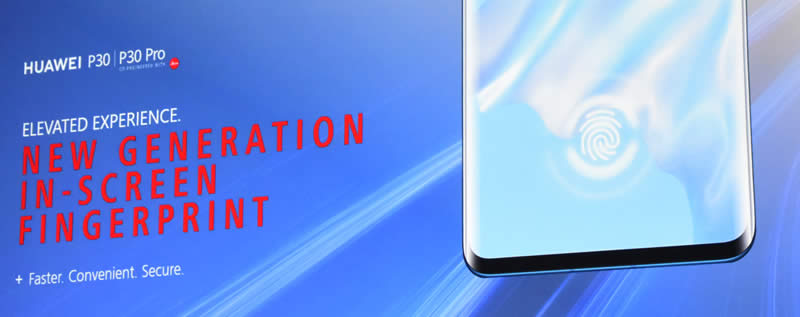
But the real excitement is in the camera.
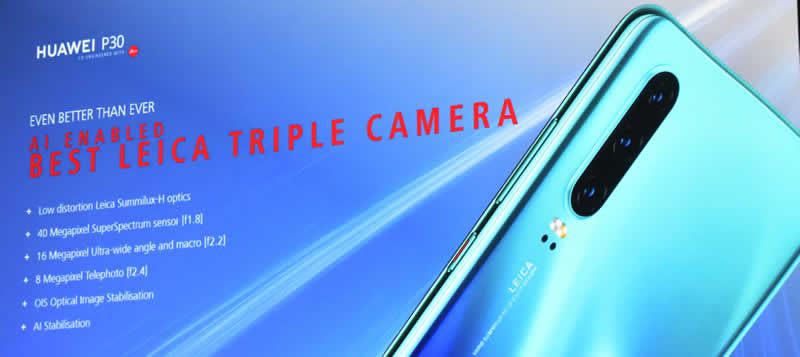
There are three lenses, a 40 Megapixel, a 16 megapixel ultra-wide angle and an 8 megapixel telephoto backed up with both optical and AI stabilisation. That delivers a 3X optical a 5X hybrid and a 30X digital zoom. Here’s how the three-lens work.
You can see the “time of flight sensor” under the lens set, that’s to help with the focus of background to foreground ratio. It measures how long light takes to reach the lens from an object.
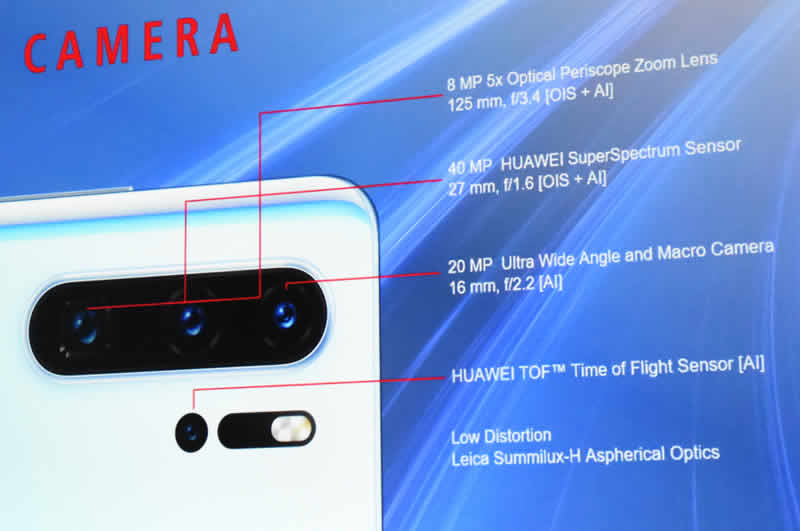
It used to be that only high-end cameras had multi element lens. The P30 has a five-element lens set and is unique with a prism used reduce the space needed.
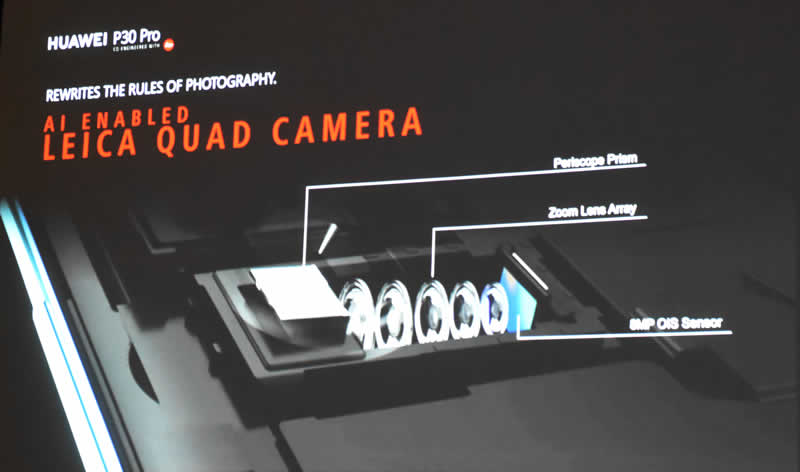
We had a look at the camera in action. This is a photo Dom took at a resort, note how he zoomed in to see the directions on the wall.
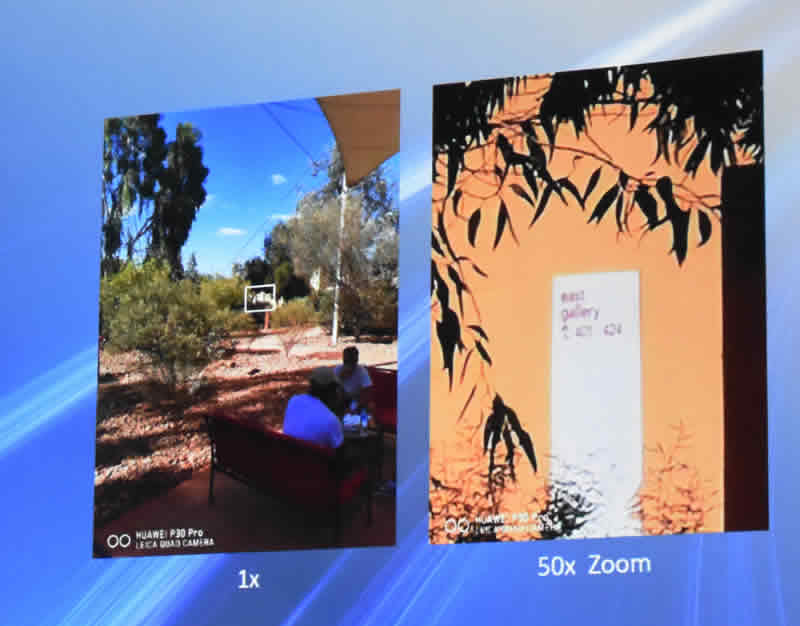
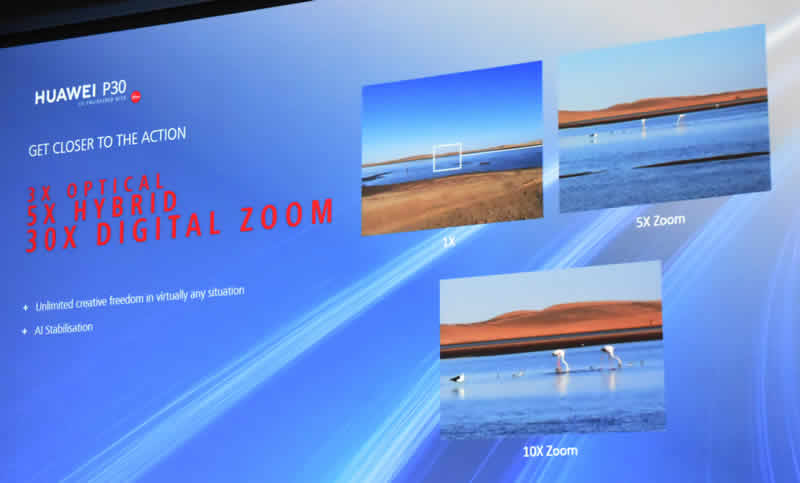
The low light capacity is superb. This is an example of the night sky,
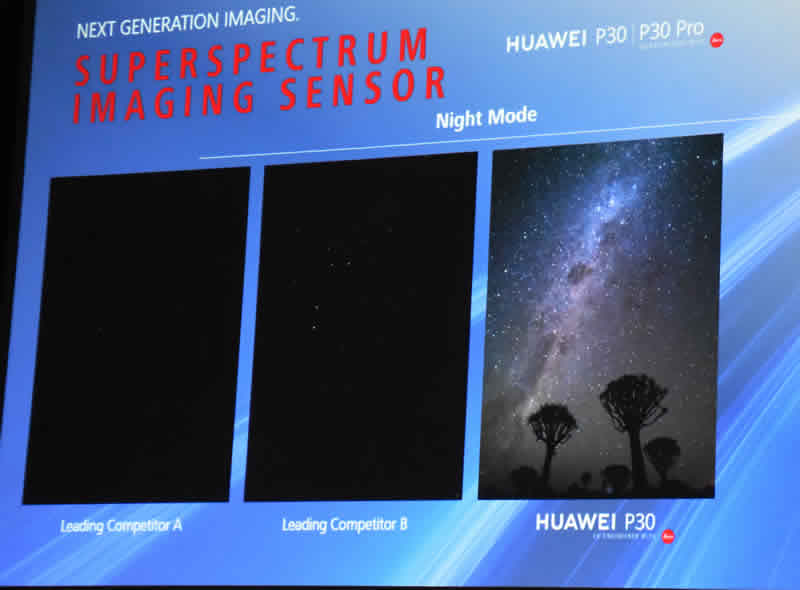
The best result on my Nikon need a tripod, my F2.8 wide angel lens and an exposure of 1 second with an iso of 20000, the P30 photo was hand held.
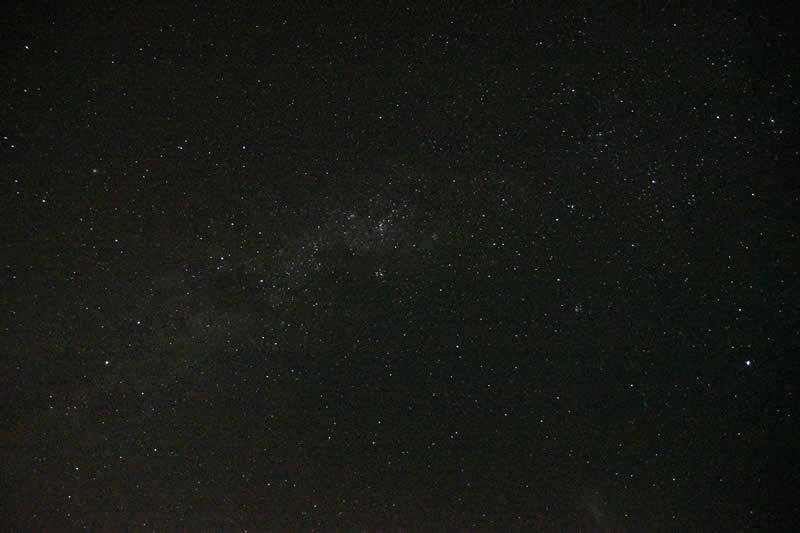
After the break Jun lead us through Matebook family including the just released Matebook X Pro.
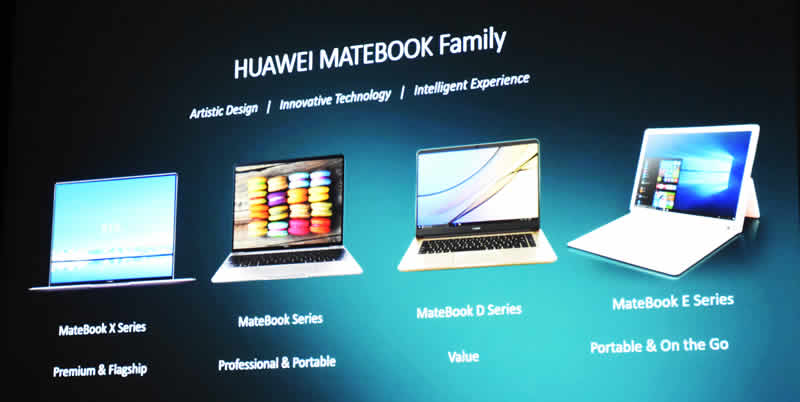
There is a whole range from high end performance to tablet styles. The have metallic bodies for durability
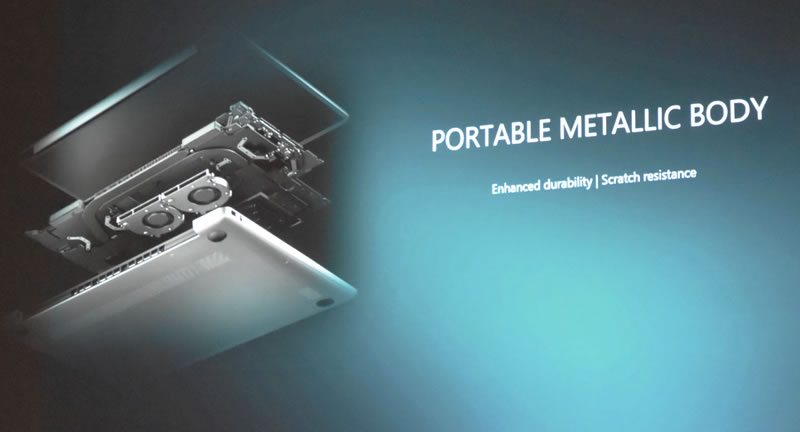
Jan showed a comparison with the Macbook Air for compact design,
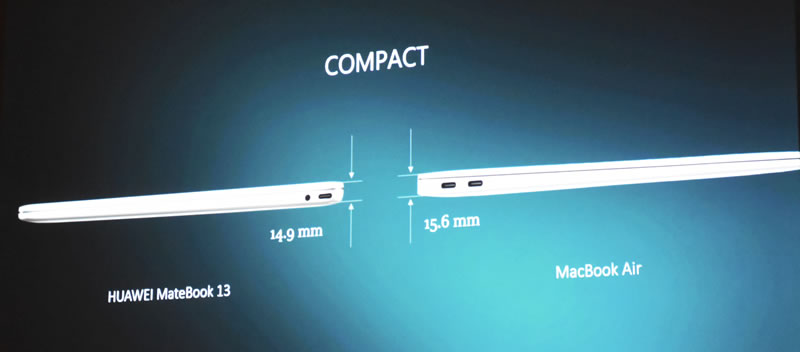
with the Matebook 13 being thinner than the Air. Cooling is achieved with shark fins a dual fan system delivering up to 25% more air.
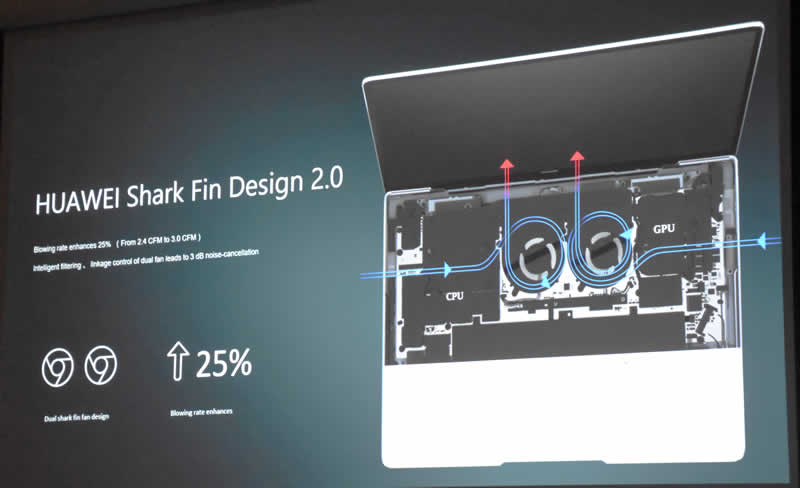
The screen boasts a full 2K display with full colour and great brightness to contrast ratios and one of the slimmest screen to edge surrounds delivering around 88% more screen to body than it’s maim competitors.
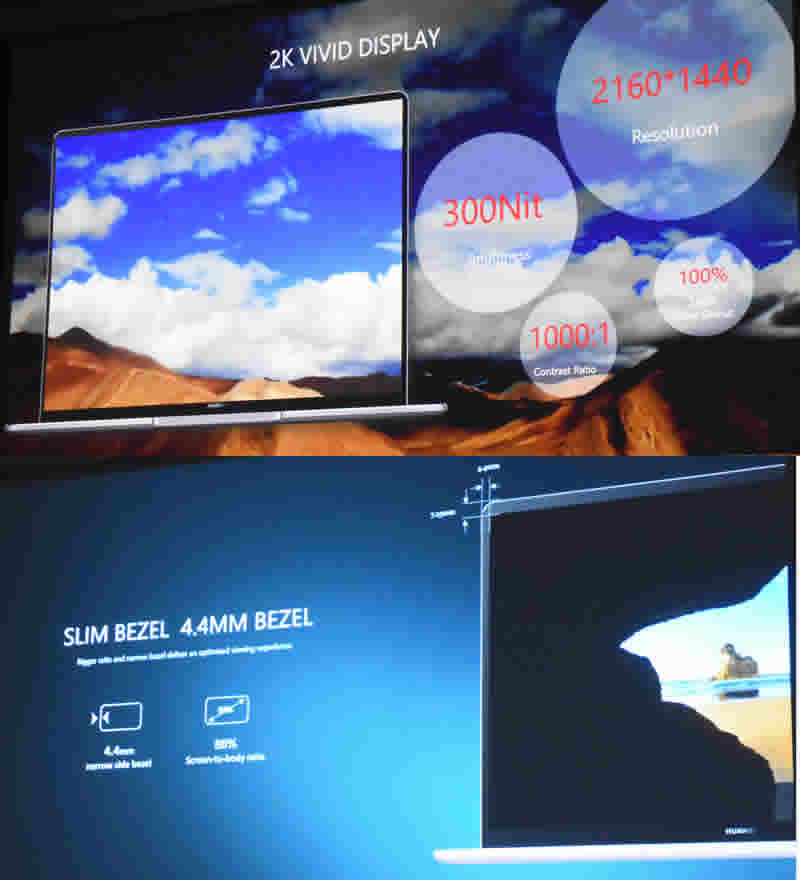
So the mate is slimmer, more compact and cooler with larger screens.
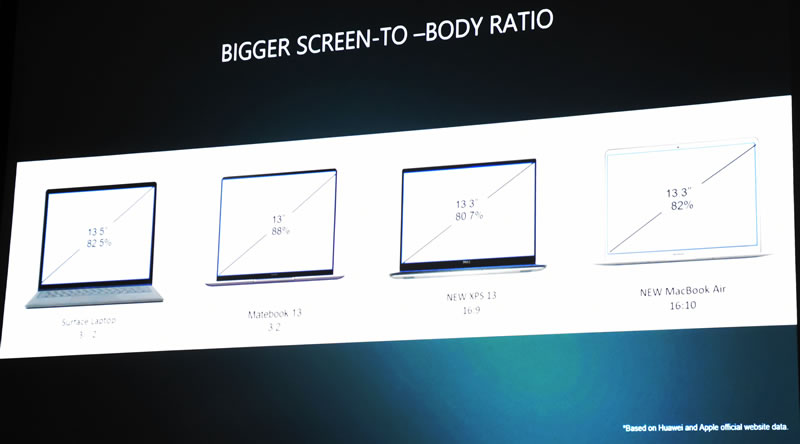
The 88% increase in screen size is achieved by making the screen squarer. Most laptops have landscape size screens. The change in shape deliverers more visible content on a web page. Most pages fill the width of the screen but with a landscape screen you will have less of the page visible than the square shaped Mate.
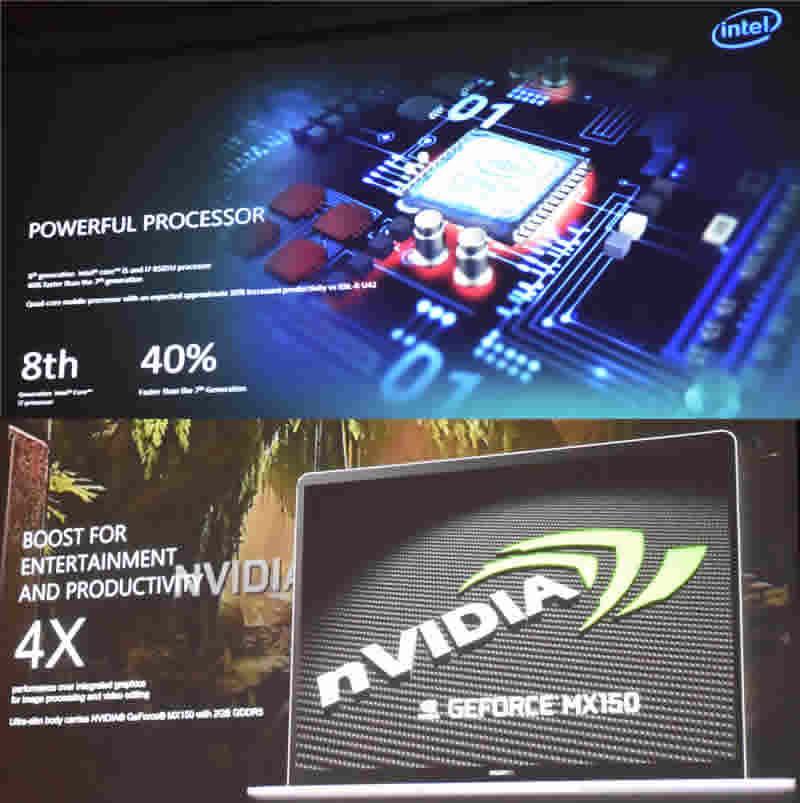
Under the hood Huawei have the ninth-generation processors with i5 and i7 chips and as Jun noted the Mate has a dedicated Nvidia graphics card in the i7 models.
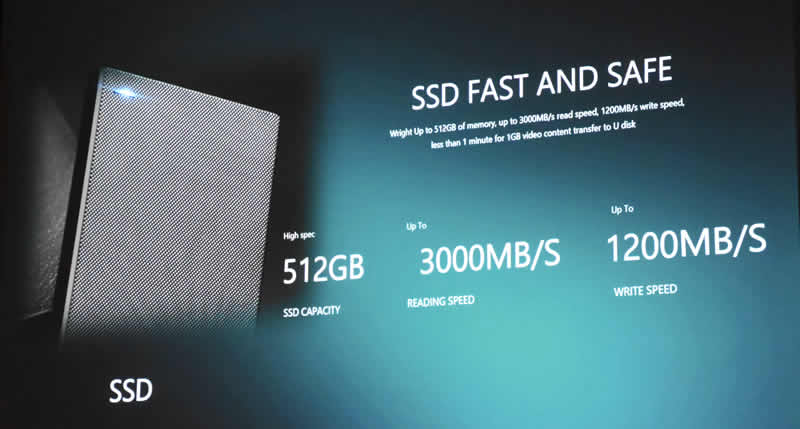
solid state drives, up to 512GB. Even the lower priced Mates have a 256 GB as opposed to the normal 128 in most low-cost laptops
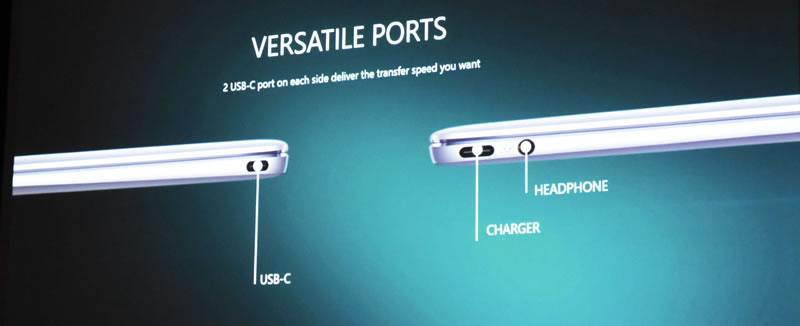
There are 2 USB C ports a charger and headphone ports. Alex noted that in the box you get a dongle with USB 3 VGA and HTMI connections.
There is a backlite keyboard and blue light adjustments for perfect eye comfort.
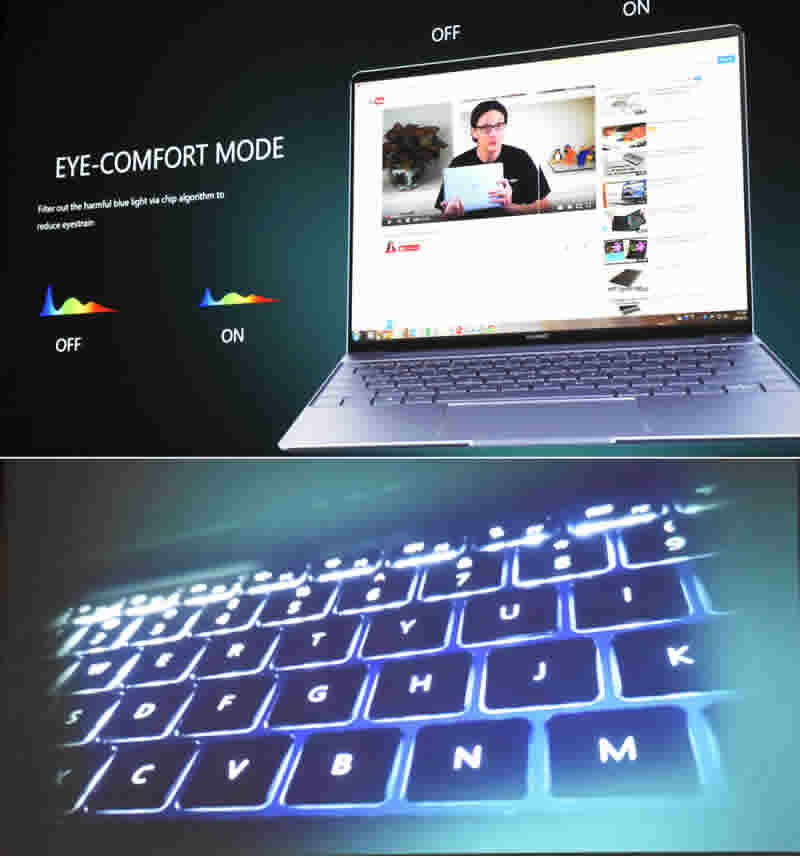
There is a built in Dolby Atmos sound system.
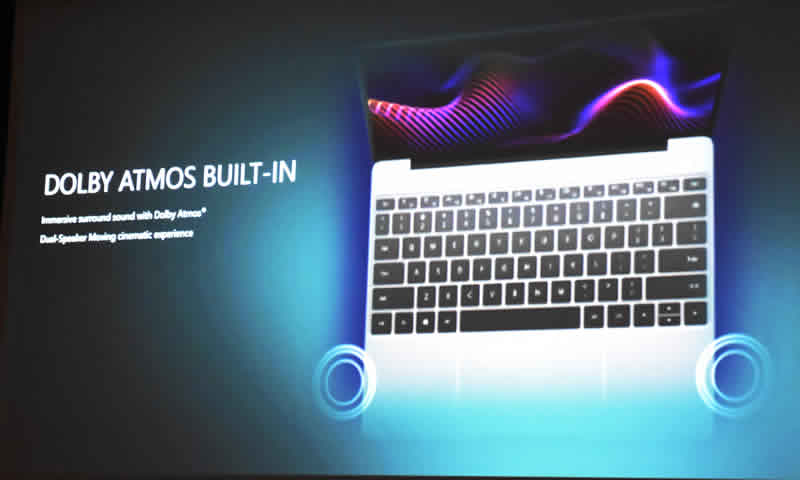
Then we got to the battery life. As we saw with the Huawei phones, the Matebooks have great battery life.
The Matebooks have a 42-watt hour capacity with up to 10 hours of work life per charge and like the phones it has a fast charge with a quick 15-minute charge delivering up to two and half hours of work.
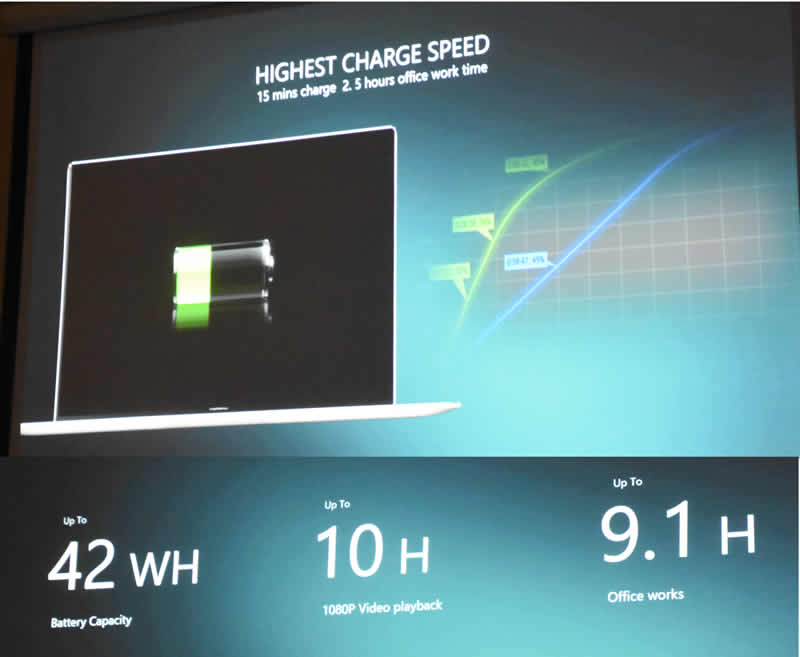
Unlike most laptops the Matebook has nice simple wall plug with USB C slots which can be used with any device needed a charge.
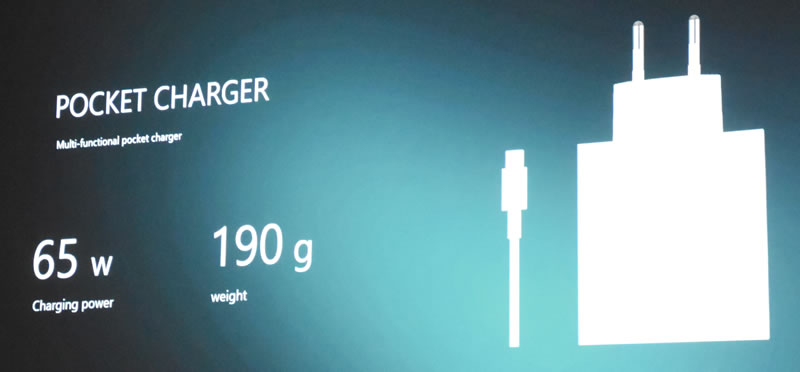
The Mate has a completely new log-in system with enhanced security. Normally you turn on your computer and it boots up to the OS. Then you have to log-in to windows. The Mate bypasses that two-tier system. Huawei have combined the use of finger print technology with the power button to create a ten second bootup to the desktop. Using the finger print ID allows Huawei to by passing the windows log-in. To quote Jun as Jun said “that’s not 10 seconds to a login screen its 10 seconds to the desktop.”
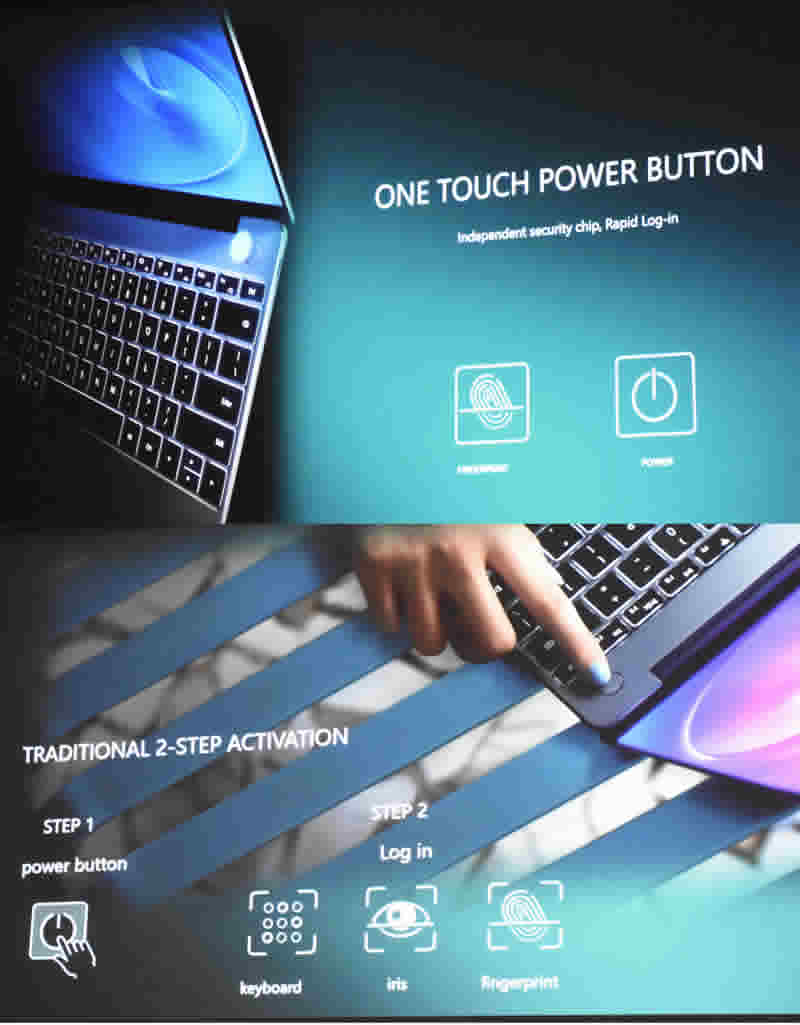
To finish Jun showed us the new OneHop system for sharing information using NFC.
I do not know what the difference is between this and the Apple ‘Airdrop’ which allows sharing of images between enabled devices.
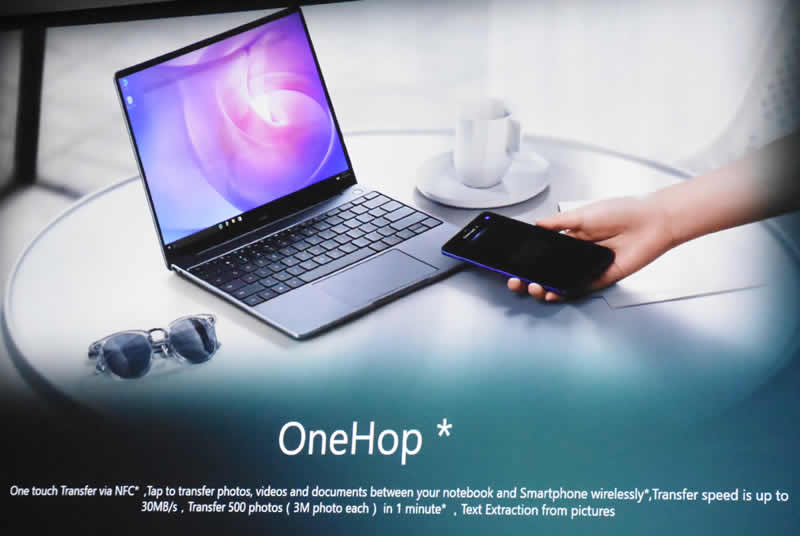
If you have a Huawei plus you can use it to take a screen shot and that can be sent to your computer or take a screen shot of a problem on the computer and send it to your phone. Of real significance was the file transfer allowing you to send photos to and from Huawei devices at speeds up to 30MB/s.
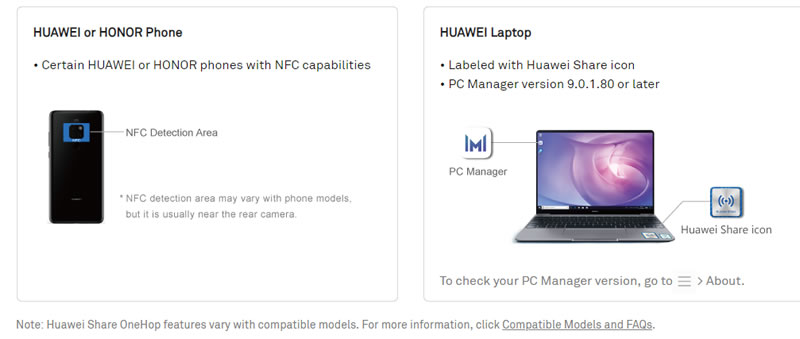
You no longer have to find a cable and plug it into the computer, find the files and run a transfer program. You simply tap the phone on the Matebook 13.

Here’s the Huawei page on OneHop
The Matebook 13 is available in the Microsoft store
PS if you signed on to Shopback See last mouth you get a discount.
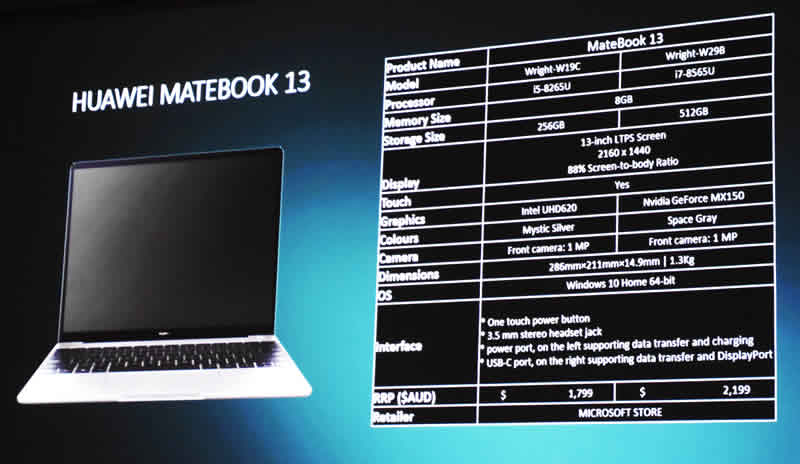
It comes in two flavours an i5 and an i7 both have 8GB ram with either a 256 or512GB storage with the i7 having a dedicated Nvidia Ge-Force graphics card.
The Raffle
Tonight, thanks to Huawei we had the GT Watch available along with a few other prices.
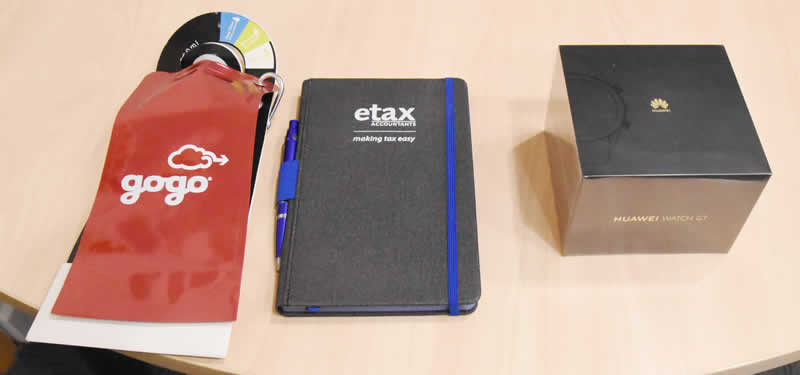
Here are some details about the Huawei GT,
Our winners
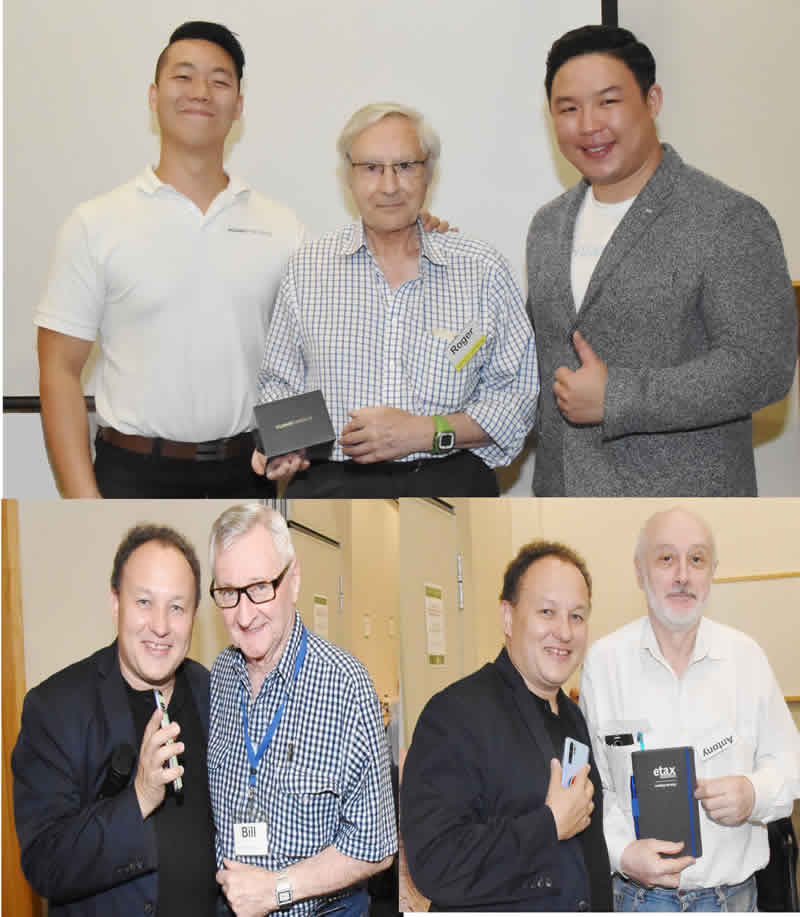
Go to: Previous Main Meeting's Index
